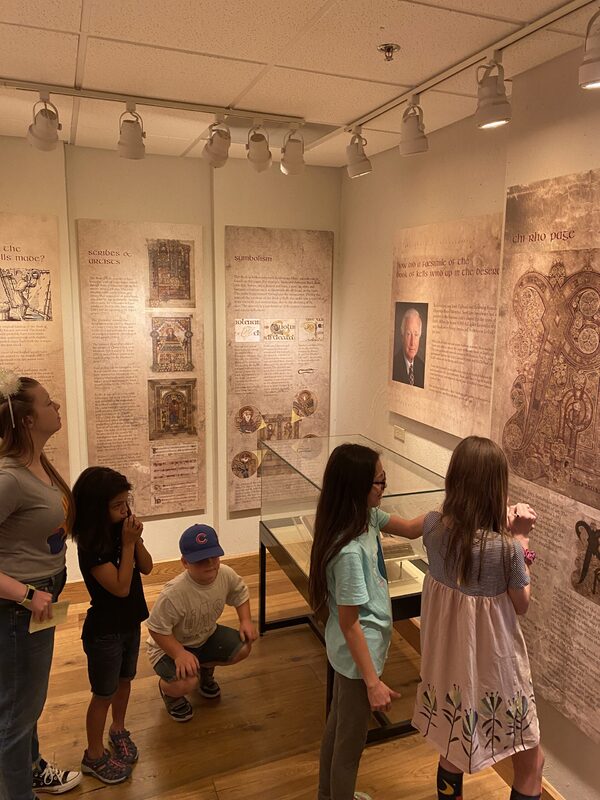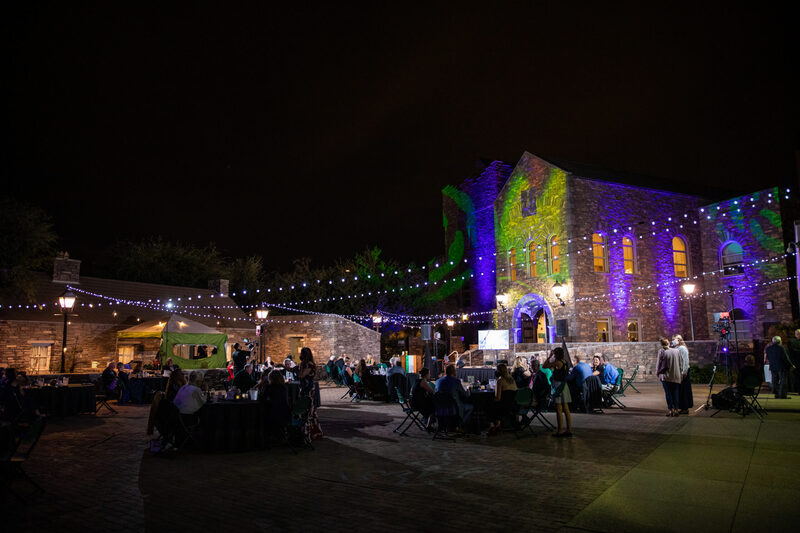Irish Cultural Center of Phoenix
Celebrating Irish heritage amidst the Arizona desert

The Irish Cultural Center stands proudly in downtown Phoenix, reminding us of transatlantic bonds, post-war dreams, and the legacy of figures like Councilman Howard Adams.
Nearly 5,000 miles away from the white Irish shores can be found the Irish Cultural Center of Phoenix, a product of two hundred years of Irish migration, an international relationship built out of the Cold War, and one determined Arizonan Irishman.
During the offset of the Cold War, in 1956, President Dwight D. Eisenhower established the Sister Cities program in an effort to establish, promote and symbolize international comradery, connection and partnership between American cities and those abroad. In 1972, the city of Phoenix joined the program through the establishment of the aptly named non-profit organization Phoenix Sister Cities, which tasked themselves with locating and partnering with cities abroad, symbolizing a desire for Phoenix to build an international presence and image as an international hub, akin to New York City or Los Angeles.
The city of Ennis, Ireland was designated a Sister City of Phoenix in 1988, marking the fifth international connection fostered by the program, and the first of European denomination. The Irish city was chosen due to the impact of Irish immigrants onto the state of Arizona itself, as well as the continued existence of Irish heritage present in contemporary Phoenix.
In the months following, the residents of Phoenix voted to set aside $500,000 worth of funds for a future Irish Cultural Center to be constructed in the heart of Downtown Phoenix, symbolizing a connection between the two geographically-distant cities, as well as Phoenix’s commitment to the Sister Cities program as a whole and its international presence.
The Irish Cultural Center (ICC) was the brain-child of Irish-American city Councilman Howard Adams, who desired to celebrate not only the Irish heritage he shared with many Phoenicians, but to help build Phoenix as an international metropolis. The Cultural Center was designed as an event and museum space meant to recognize and celebrate the Irish heritage in which over 10% of Phoenicians share, while honoring the influence of Irish migration to the Western United States and Arizona in general during the 20th century.
The ratification of the Japanese Friendship Garden in 1987, a symbol of connection with one of Phoenix’s other Sister Cities, Himeji, Japan, had a major role in helping Adams push for his dreamed Cultural Center. With the creation of the Friendship Garden on the grounds of Margaret T. Hance Park, Adams knew he had an opportunity to make his Cultural Center a reality. Adams was an influential figure in the process of bringing Ennis in as a Sister City of Phoenix, and spent weeks travelling to the Irish city on city grants to help make the connection a reality a year after the Garden’s opening. Adams heavily campaigned for the ICC in yearly Council agendas, with the Cultural Center finally coming to fruition and construction slated to begin in 1999. Funding and construction was streamlined by a joint effort between the non-profit organization Irish Cultural and Learning Foundation and the City of Phoenix Parks and Recreation Department, who together fundraised over $700,000 through private donations and city bonds. The Center would become an ideological and geographical neighbor to the Japanese Friendship Garden, with land from the Margaret T. Hance Park set aside to host the Irish campus.
Whereas the Friendship Garden was proposed by the Himeji major to celebrate the two cities’ mutual relationship and honor the impact of Asian immigrants and culture in Phoenix, the Center was proposed and supported locally by Arizonans, both of Irish descent (like Adams) and not, who wanted to provide a gathering place for and celebration of Irish heritage and culture.
The creation of the Irish Cultural Center came at a time where cities throughout America began to celebrate their Irish heritage. Cities like Boston, New York City, Philadelphia and San Francisco created Irish Cultural Centers of their own in the latter half of the 20th century, which served to celebrate Irish culture and heritage, as well as recognize the impact of Irish immigrants and their descendants who resided in the regions. Cities began to host Irish festivals and parades throughout the month of March, and Irish pubs became more popular sites around downtown centers. Like Phoenix, many of the major cities celebrating Irish identity in the postwar years did harbor many Irish migrants and serve as the homes of various Irish diasporas throughout the United States throughout the late 19th and into the 20th century. On a federal level, President George H.W. Bush proclaimed March as Irish-American Heritage Month in 1991, designated to honor the contributions of Irish immigrants and their descendants to American society, which has remained an annual tradition of Presidents since.
Phoenix’s Irish Cultural Center was established with the creation of the An Gorta Mór, or the Great Hunger Memorial, designed by Phoenix artist Maureen McGuire and crafted by sculptor Seamus King, which honored and memorialized the Irish populace who struggled and starved during the Great Famine of 1845-1852. It was the first structure built on the newly-approved site in 1999. Standing as an arc made of stone tablets with a poem inscribed on its face, the statue symbolizes a passageway from the old world into the new. A staple of Irish cultural centers throughout the United States, commemorations of the Famine remember those Irish who escaped hardship and migrated to the United States in the hope for a new life. The statue in a way also served as a stamp of authenticity onto the developing Cultural Center, connecting it to cultural centers beyond.
After funding and development for the Center was officially approved, the construction of the rest of the site’s features - including a stone replica farmhouse, great hall, courtyard and cottage - began in 2001, designed to showcase Ireland’s historical past and the lives of those who lived during it. The Great Hall was the first building constructed, and used stones imported from County Clare, Ireland for its detailing.
After years of deliberation, planning and fundraising, the Irish Cultural Center officially and ceremoniously opened in March 2002, coinciding with St. Patrick’s Day, with the unveiling of the An Halla Mór, aka The Great Hall. The opening ceremony saw many key figures in attendance, including the Mayor of Ennis, but did not include Councilman Adams, who died just a year before in 2001.
The replica cottage, planned since the Center’s inception, was eventually completed in 2004, built as a model of an 1850s Irish cottage, complete with furnishings and built from stone sourced from Ireland. Original plans for the cottage included an authentic thatch roof and dirt flooring, which was quickly rejected by the City of Phoenix due to fire and safety hazards. The standing cottage sports authentic furnishings, opening a portal to a distant historical past and providing an ‘authentic’ experience.
In 2012, the McClellan Library opened as the newest edition to the Irish Cultural Center campus, a hub for research in Irish culture and genealogy. Designed after a twelfth-century Norman castle, the McClellan Library, named after beneficiaries and late former Shamrock Foods owners Frances and Norman McClelland, hosts a vast collection which spans over 8,000 books and research materials, and includes a genealogical research facility, allowing visitors of Irish ancestry to become more aligned with their European heritage. The Library is the largest of its kind in the Western United States, and continues to host classes, festivals and events meant to spread knowledge and appreciation of Irish culture and heritage. The Library also permanently hosts an exhibition on the Book of Kells, a Latin manuscript dating from the 8th-9th century containing four gospels of the New Testament, designed to emphasize and promote learning of Ireland’s Catholic roots.
In 2019, the Center hosted the International Famine Commemoration, an annual event remembering and honoring those lost during the Great Famine, becoming one of the only American cities to host the event behind New Orleans, Boston, Philadelphia and New York City. The event also sought to recognize the Irish Cultural Center itself and the emigration of millions of Irish to the American West during and after the Famine.
Currently, the Irish Cultural Center accepts tours and walkthroughs of its campus, library and exhibitions. Standing on the exquisitely modern Central Avenue and Portland Street, the stone-laden Cultural Center stands out as a relic of a historical ethnic past, as well as a product of postwar American celebration of Irish heritage and migration, and a testament to the strong will of Councilman Adams.
Images





